Press release here first ![]()
APX by Lotus Engineering (APX stands for "Aluminium Performance
Crossover") is the first example of a complete vehicle built on the innovative
Versatile Vehicle Architecture (VVA).
APX is a demonstration of Lotus Engineering's ability to create innovative and exciting, high
performance products through its world class capability in Vehicle Design, Performance
Powertrain Engineering and niche vehicle development, the first production car from this
technology will be the new Lotus mid-engine super sportscar.
It is a 7-seater (in reality a 5 + 2 with the two rear seats being occasional) four-wheel drive
"Crossover" vehicle with a front mounted 300 hp supercharged V6 petrol engine. Weighing in
at just 1570 kg and with a power to weight ratio of 191 hp per tonne, the APX has sportscar
like performance of 5.4 seconds to 100 km/h (5.0 seconds to 60 mph) before reaching a top
speed of 245 km/h (152 mph). These performance figures are as good as the highest
performing 4x4 "Crossover" vehicles from other brands with up to 195 hp per tonne. Crucially
though, whereas those vehicles need higher output engines to compensate for heavy weight,
APX does not. Combined fuel consumption for APX is estimated to be 8.7 litres / 100 km (or
32 mpg) – impressive on its own and more so when compared to its production rivals which
often consume more than 13 litres per 100 km (22 mpg).
APX is manufactured predominantly from aluminium in the form of high-pressure die-cast
corner nodes, stampings and extrusions. It uses advanced assembly techniques, including
adhesive bonding, self-piercing rivets and flow-drill screws for construction – joining
techniques that Lotus calls Riv-Bonding. Lotus has optimised the use of these technologies
thus significantly reducing the number of mechanical fixings within the monocoque structure.
This has reduced the level of investment required in manufacturing equipment.
APX is not just a Lotus Engineering concept, but a feasible prototype close to
production; it is not a concept indicating a strategic direction of Lotus Cars; it is,
however, a brilliant demonstration of VVA and the skills of the team from Lotus Engineering
into what is regarded as the future of niche vehicle manufacture. APX is production feasible as
all the components can be made cost effectively and in high niche volume (up to around
30,000 per year).
APX is powered by a V6 engine has been designed by Lotus Engineering's powertrain
division. The directive for Project NEF was to produce a high performance prototype engine
without the need to resort to exotic materials or manufacturing technology, allowing
manufacture around the world.
APX's engine is a supercharged 3 litre (2996 cc, Bore: 88 mm, stroke: 82.1 mm) V6 DOHC
engine, mounted longitudinally in the front of the vehicle.
Performance of the engine is maximum power of 224 kW (300 hp, 304 PS) at 6250 rpm and a
torque of 360 Nm at 4500 rpm.
Like the vehicle, the engine not just a Lotus Engineering concept, but a feasible prototype
close to production, however it is not a concept indicating a strategic powertrain
direction of Lotus Cars. The engine is production feasible and it is expected that the
commercialisation of this engine will be of interest to the automotive clients of Lotus
Engineering.
Simon Wood, Director of Lotus Engineering explains the rationale behind building APX: "the
first production car from Lotus to use the Versatile Vehicle Architecture will be the new mid
engine "super sportscar", which will go into production in 2008. Lotus Cars customers eagerly
await this vehicle that will be a class-leading and phenomenally high performing car. However,
we wanted to demonstrate the true versatility of the VVA technology, and what better way than
to build a type of car that no one would expect from Lotus – a 4-wheel drive "Crossover"
vehicle. I am delighted with this vehicle and we believe that this technology and strategy is
what the motor industry must follow to be able to produce niche vehicles efficiently and
quickly.
Simon Wood continues; "There is already a great deal of interest in both APX and VVA
technology from our client base and we will work hard to see how Lotus Engineering can help
them with their strategic product solutions".
APX by Lotus Engineering in more detail
Background
At the Geneva International Motorshow 2005 Lotus Engineering showed the first example of a
VVA understructure. This understructure is the basis for APX.
Traditionally OEMs seeking to gain competitive advantage through exciting niche vehicles
have to either design a new platform or share one already available. Engineering a bespoke
low-volume platform is an expensive, time-consuming solution, whilst sharing a mainstream
chassis normally results in compromises in performance and design.
Lotus Versatile Vehicle Architecture (VVA) has been developed to bridge a gap in the
investment-volume curve to exploit the benefits of producing at medium volumes but for niche
markets, thereby giving the best chance of business case success and favourable returns.
The key to the VVA architecture is the high-pressure die cast corner nodes that are combined
with bonding, mechanical fasteners, extruded and pressed aluminium. Lotus Engineering is a
world leader in aluminium, steel and composite body engineering, joining techniques, and
vehicle systems integration. The innovative VVA technology offers a fast-to-market, costeffective
approach to differentiated niche products by spreading the development, investment
and bill of materials burden across a range of niche vehicle variants, without the compromise
that stems from conventional 'platform sharing'.
The philosophy is based on the commonality and versatility of key elements of the vehicle
structure and body systems across a 'family' of niche vehicle variants, with a combined annual
production rate of up to around 50,000 units. Structural components common to each family
member are arranged in different configurations in each variant around the ingenious corner
nodes.
The great advantage of this technology is that it can be used by one OEM looking to develop a
range of niche products, or by a group of OEMs looking to share investment, but still retain a
high degree of end product separation.
The Engine – 300 hp, 3-litre V6
APX is a front engined and four wheel drive "Crossover" vehicle for occasional off road use.
The V6 engine has been designed and developed by Lotus Engineering's powertrain division.
The directive for the project was to produce a high performance prototype engine without the
need to resort to exotic materials or manufacturing technology, allowing manufacture around
the world.
The supercharged V6 is part of a family of normally aspirated and supercharged high
performance engines which includes 2.2 litre and 3.0 litre normally aspirated derivatives. All of
these engines are at the prototype stage and are production feasible, but are not currently
planned for production.
The engine is production feasible and it is expected that the commercialisation of this engine
will be of interest to the automotive clients of Lotus Engineering.
APX's engine is a supercharged 3 litre (2996 cc, Bore: 88 mm, stroke: 82.1 mm) V6 DOHC
engine, mounted longitudinally in the front of the vehicle. It uses a Rootes-type supercharger
with a compact air – to – water Laminova – type charge cooler with separate parallel coolant
system using its own water pump and heat exchangers allowing a charge temperature
reduction of approximately 50 degrees Celcius.
Performance of the engine is maximum power of 224 kW (300 hp, 304 PS) at 6250 rpm and a
torque of 360 Nm at 4500 rpm. 80% of peak torque is between 1500 rpm and maximum revs
of 6500 rpm.
Like all products from Lotus, it follows the adage of "performance through light weight", in that
the engine weighs just 171 kg (fully dressed, dry weight). This gives a phenomenal specific
output of around 1.31 kW/kg (1.7 hp/kg). Specific performance is 74.6 kW / litre (100 hp / litre,
101.3 PS / litre).
This light weight comes from using cast lightweight aluminium alloy cylinder block (with thin
wall iron liners), aluminium cylinder head, and an aluminium structural oilpan, able to support
the front drive shafts. The oilpan also includes coolant and lubrication channels to the oil
cooler and filter, and an electronic oil level and temperature sensor. Even the pistons are
lightweight – with each on weighing just 454 grams!
The construction of the V6 engine is arranged around the two banks of cylinders at an angle of
75 degrees with a compact cylinder offset of just 32.5 mm. This allows the engine to be
compact, with good vibration characteristics, eliminating any requirement for balance shafts
and the related extra cost, weight, height and complexity.
The Engine Management System uses a state of the art 32 bit ECU processor capable of over
200 million calculations per second. The ECU is Euro IV / E-OBD and LEV/OBDII compliant.
And of course the engine satisfies the European End of Life Requirements (ELV) with respect
to recyclability and recovery.
The V6 engine is an example of extensive research into "engine downsizing by Lotus
Engineering's Powertrain Team. Engine downsizing is the concept of using advanced
technologies to enable a small engine to produce the power and torque of a much larger
engine, with the obvious reduction in fuel consumption and emissions. One of the key
demands of the automotive industry is to produce engines with not only low emissions and
high fuel economy but also extremely good performance. These two demands for performance
and economy are not normally compatible unless there is a significant change in the engine
development strategy.
Like the vehicle, the engine not just a Lotus Engineering concept, but a feasible prototype
close to production, however it is not a concept indicating a strategic powertrain
direction of Lotus Cars. The engine is production feasible and it is expected that the
commercialisation of this engine will be of interest to the automotive clients of Lotus
Engineering.
Vehicle Structure:
Prior to design release for the manufacture of this vehicle, the project was subject to industry
standard engineering processes to ensure a quality product. Industry standard APQP
processes have tracked and validated CAE (Computer Aided Engineering - Computer analysis
for strength, durability, crash performance, Vibration, Aerodynamics, Fluid Flow etc), NCAP
targets for crash, pedestrian impact, torsion, bending and modal stiffness targets, full static
and dynamic CATIA V5 DMU (Digital Mock Up - Digital build of the car to demonstrate the
vehicle build and prove the fit of each part) to minimise build issues and the full suite of
Material and Process simulation and validation to confirm manufacturing feasibility.
This coupled with tolerance analysis, full DFM/DFA (Design For Manufacture/Design For
Assembly) and advanced joining technology research has been delivered in a true
simultaneous engineering environment. The vehicle build proved very successful with only a
handful of build concerns. A number of assembly validation builds were eliminated form the
project saving both time and cost essential for niche vehicle projects needing 'Right First Time'
design and engineering philosophies to overcome tight project constraints.
All significant components and structural items are made from Aluminium. This means that
APX weighs in at a sector leading light weight of 1570 kg so even though it is not a Lotus car,
it adheres rigidly to the fundamental core values of the Lotus brand of "Performance Through
Light Weight". Of course lightweight structures are Lotus Engineering's forte and this is the
industry recognised area where the greatest improvements in performance and fuel economy
can be gained.
Understructure Construction
The understructure is riv-bonded aluminium, consisting of high-pressure die-castings,
stampings and extrusions, and uses advanced assembly techniques, including adhesive
bonding, self-piercing rivets and flow-drill screws for construction.
The self-piercing rivets are used in a similar way to spot welding on a conventional steel shell,
with the flow-drill screws used for single-sided access on closed sections. Both suffice to hold
the structure together during the adhesive cure cycle, and contribute to the performance of the
structure during both static and dynamic impact conditions. The heat-cured high strength
structural adhesive is the main joining medium, and used in combination with the mechanical
fasteners, produces an immensely strong, durable joint and a lightweight shell with exceptional
torsional stiffness.
The whole vehicle is 4697 mm long and 1852 mm wide. Wheel base is 2700 mm and track is
1554 mm (front) and 1556 mm (rear).
The Design
The brief for Lotus Design was to create a visually arresting " Jekyll and Hyde " car that fulfilled
the needs of practical and flexible everyday transport but also provided the enthusiast with a
focused driving machine. As with all crossover vehicles the solution is tailored to a specific
niche buyer who will instantly identify with these unique attributes.
Russell Carr, Chief of Design for Lotus explains: "We saw the customer as a sportscar
enthusiast who, with a typical family of 2 young children, occasionally wants to carry four or
five adults in addition to their children. To facilitate this a third row of fold flat coupe style rear
seats are accommodated within the cabin."
The flexibility of the VVA platform system enabled the Lotus Design Studio a rare opportunity
to create a highly tailored solution that would meet, both, the complex requirements of the
occupant and technical package as well as being aesthetically pleasing. The car has to look
and feel like a sportscar but accommodate a 5 + 2 seating package.
Exterior Design:
Russell Carr explains the exterior design philosophy: "We wanted the design to communicate
the driving experience of the car, which is characterised by extreme power, performance and
grip. Therefore the form language had to convey strength and velocity whilst looking planted
to the road. As with all designs the essences of strength and movement are generated from
stance and proportion which are, on this car, characterised by an extreme cab rearward,
teardrop like silhouette and prominent wheel arches The illusion of speed is further
communicated by a taught, fluid form language within which feature lines and surfaces stretch
seamlessly from the penetrative nose to the boat - tail rear end. Power is re- enforced by a
prominent hood line, similar to classic front engined sportscars, and flared arches, whilst
strength is given by a deep bodyside and coupe style slim glasshouse."
Interior Design
The brief for the interior of the car was to create an environment with the visual drama of a
sportscar but with a high degree of functionality and a contemporary sense of luxury.
Russell Carr explains further: "We started by working with the engineering group to optimise
the driving position and major controls. Then we created memorable features and controls that
combine intuitive function with a unique design and high quality materials. This is evident in
the design of the HVAC control, the start button and instrument pack. The latter communicates
the cars sporting personality through a distinctive sports bike look which mixes analogue and
digital displays within a high quality aluminium casing."
The digital screens of the instrument pack have multi-functionality enabling major data,
including Satellite Navigation, to be placed logically in front of the driver. Great care was taken
in developing the grains, textures and material finishes to ensure an ambience of sportiness
and contemporary luxury.
Example VVA families
The following represents illustrative VVA families that could be achieved:
Family A
Front engine 4WD crossover 15,000 / year
Mid engine RWD supercar 5,000
Front engine RWD coupe 10,000
Front engine RWD saloon 20,000
Family B
Front engine FWD coupe 10,000
Front engine 4WD SUV 25,000
Family C
Mid engine RWD coupe 5,000
Front engine FWD saloon 25,000
Front engine 4WD crossover 30,000 – i.e. APX by Lotus Engineering


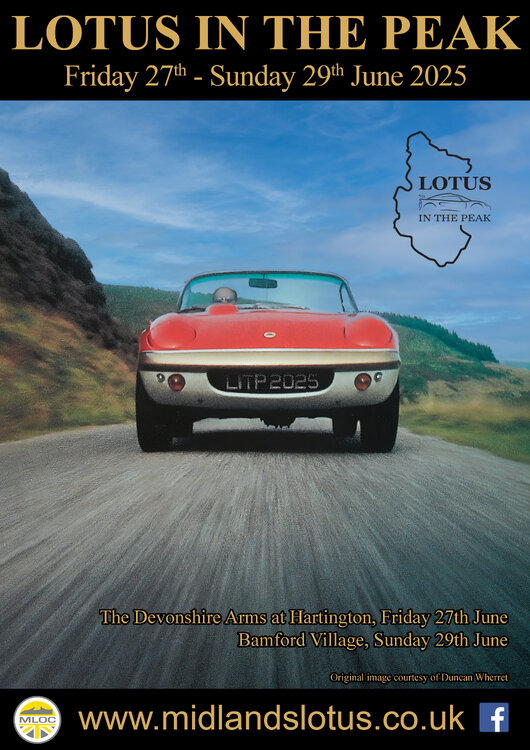


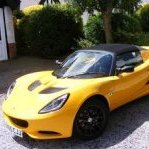
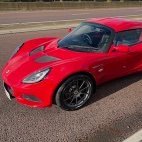
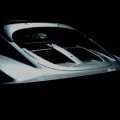
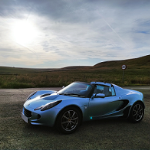
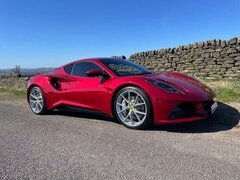
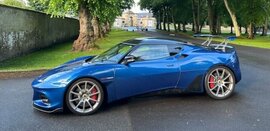

Recommended Comments
There are no comments to display.
Join the conversation
You can post now and register later. If you have an account, sign in now to post with your account.